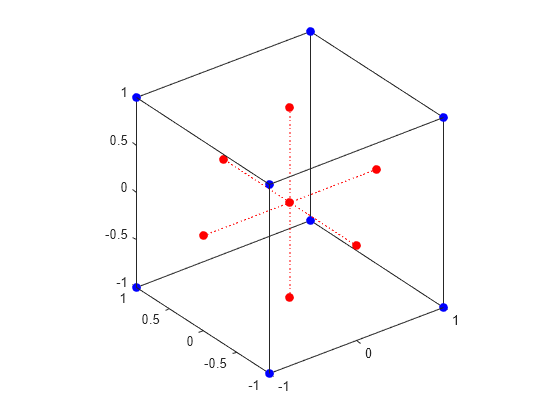ccdesign
Central composite design
Description
dCC = ccdesign(n)dCC containing a central composite (Box-Wilson) design
for n factors, where n is a positive integer
scalar in the range [2, 26]. The size of dCC is
m-by-n, where m is the number
of runs (points) in the design. Each row of dCC contains the settings
of all factors for that run. The factor values are normalized so that the cube points take
values between –1 and 1.
dCC = ccdesign(n,Name=Value)dCC with additional options specified by one or more name-value
arguments. For example, you can specify the number of center points, and the maximum number
of points per block.
[
additionally returns a 1-by-m vector containing the block numbers for
each run, using any of the input argument combinations in the previous syntaxes. The blocks
indicate the runs to measure under similar conditions in order to minimize the effect of
inter-block differences on the parameter estimates.dCC,blocks] = ccdesign(___)
Examples
Input Arguments
Name-Value Arguments
Output Arguments
References
[1] Box, G. E. P., and K. B. Wilson. "On the Experimental Attainment of Optimum Conditions." Journal of the Royal Statistical Society: Series B (Methodological) 13, no. 1 (January 1951): 1–38. https://doi.org/10.1111/j.2517-6161.1951.tb00067.x.
[2] Box, G. E. P., W. G. Hunter, and J. S. Hunter. Statistics for Experimenters. Hoboken, NJ: Wiley-Interscience, 1978.
[3] Box, G. E. P., W. G. Hunter, and J. S. Hunter. "Multi-Factor Experimental Designs for Exploring Response Surfaces." Annals of Mathematical Statistics 28, no. 1 (March 1957): 195–241. https://doi.org/10.1214/aoms/1177707047.
Version History
Introduced before R2006a

